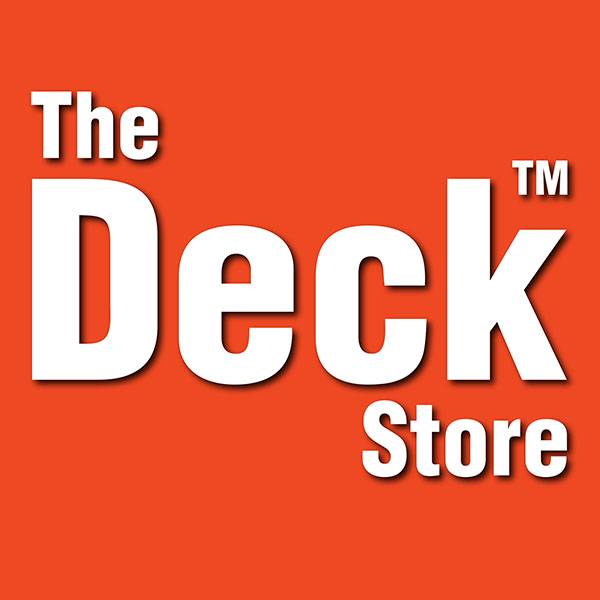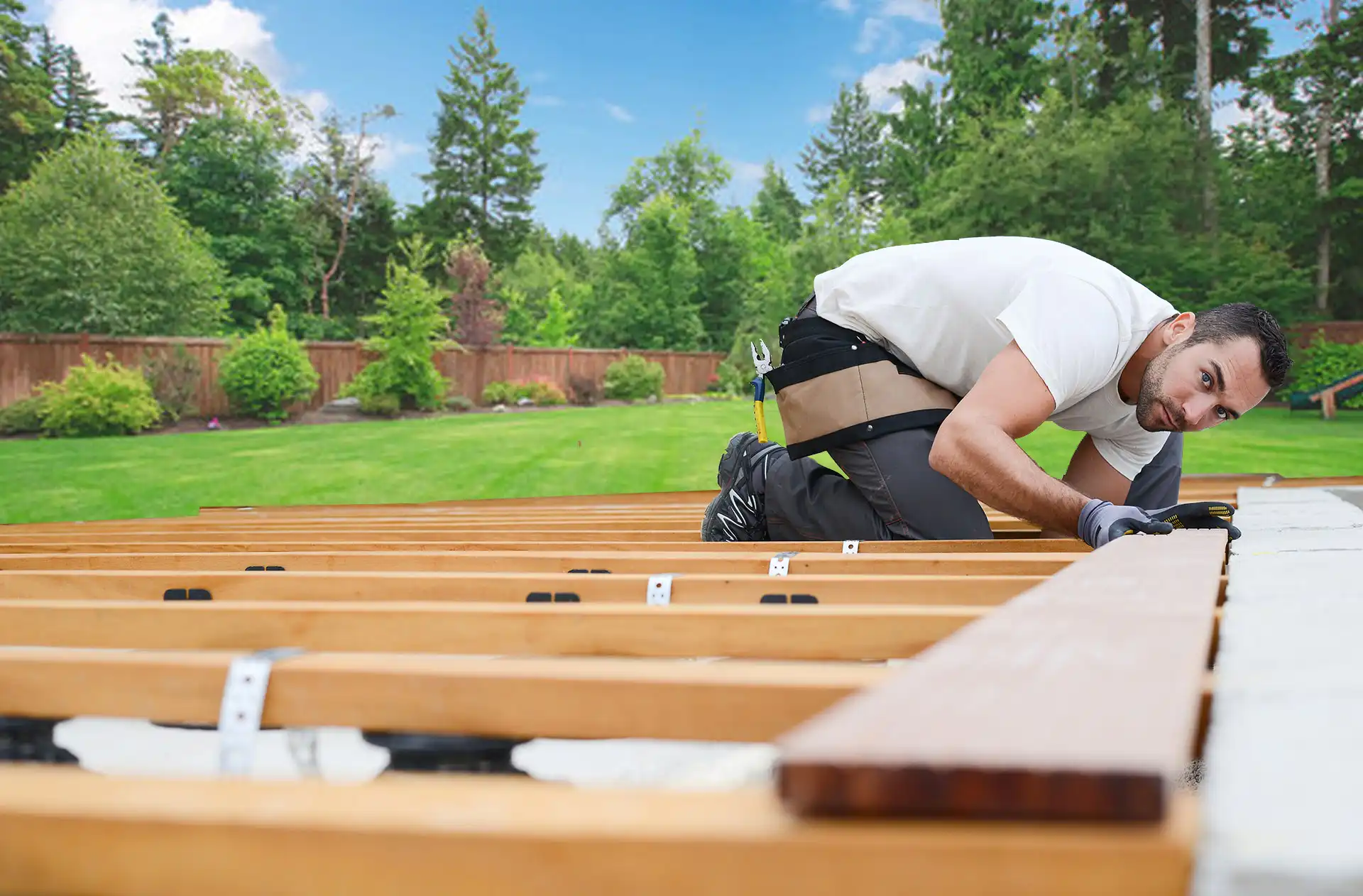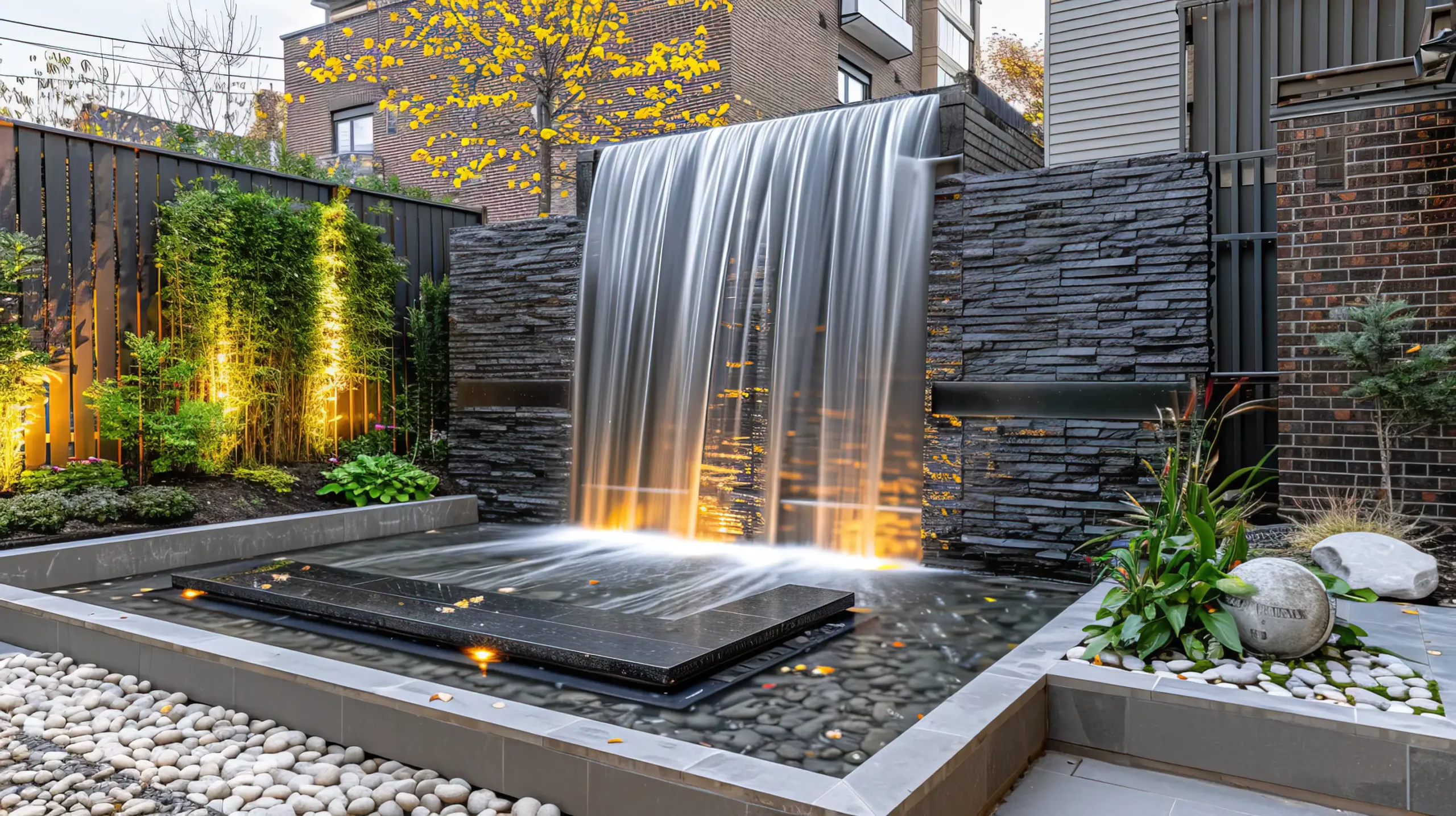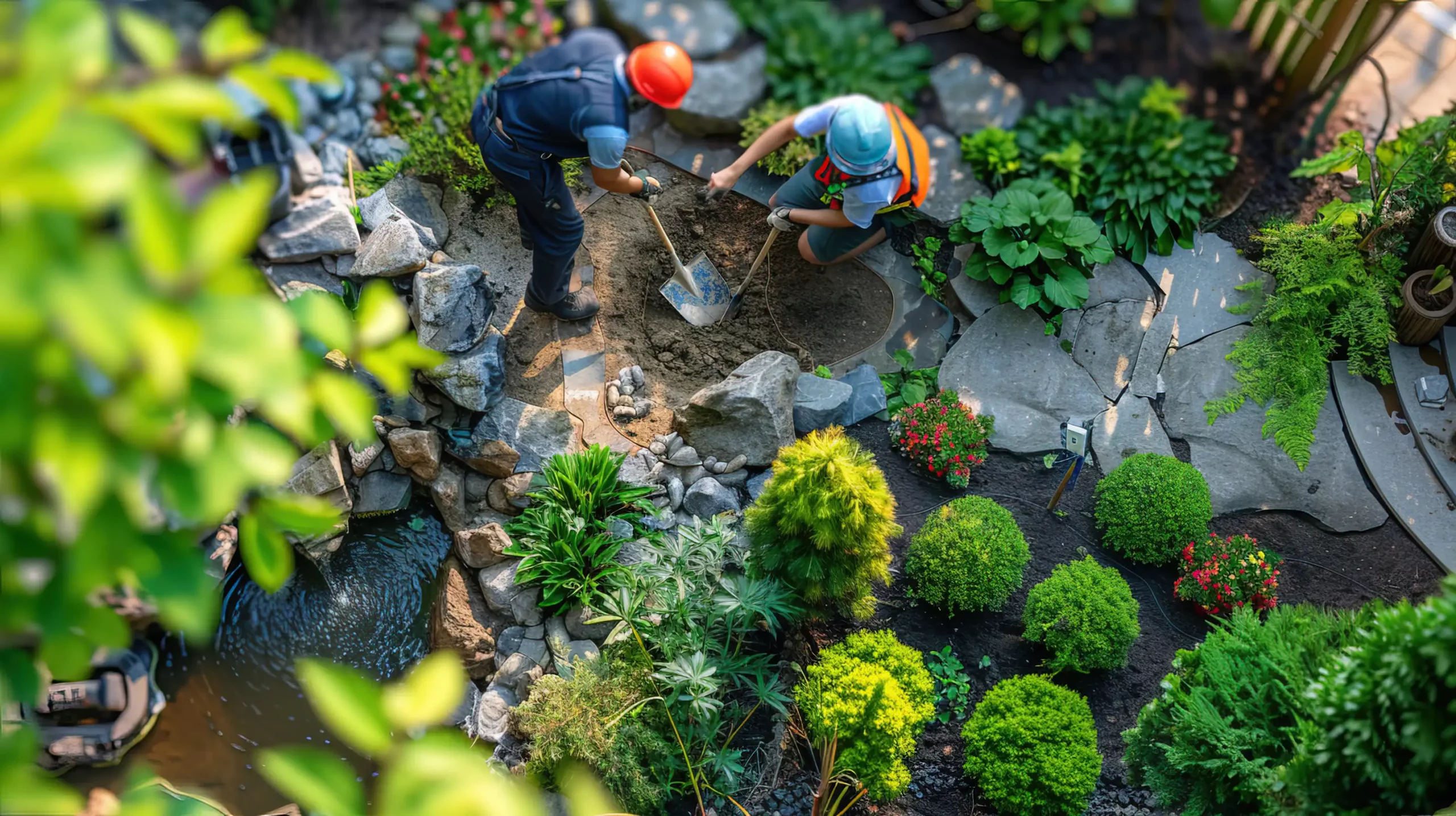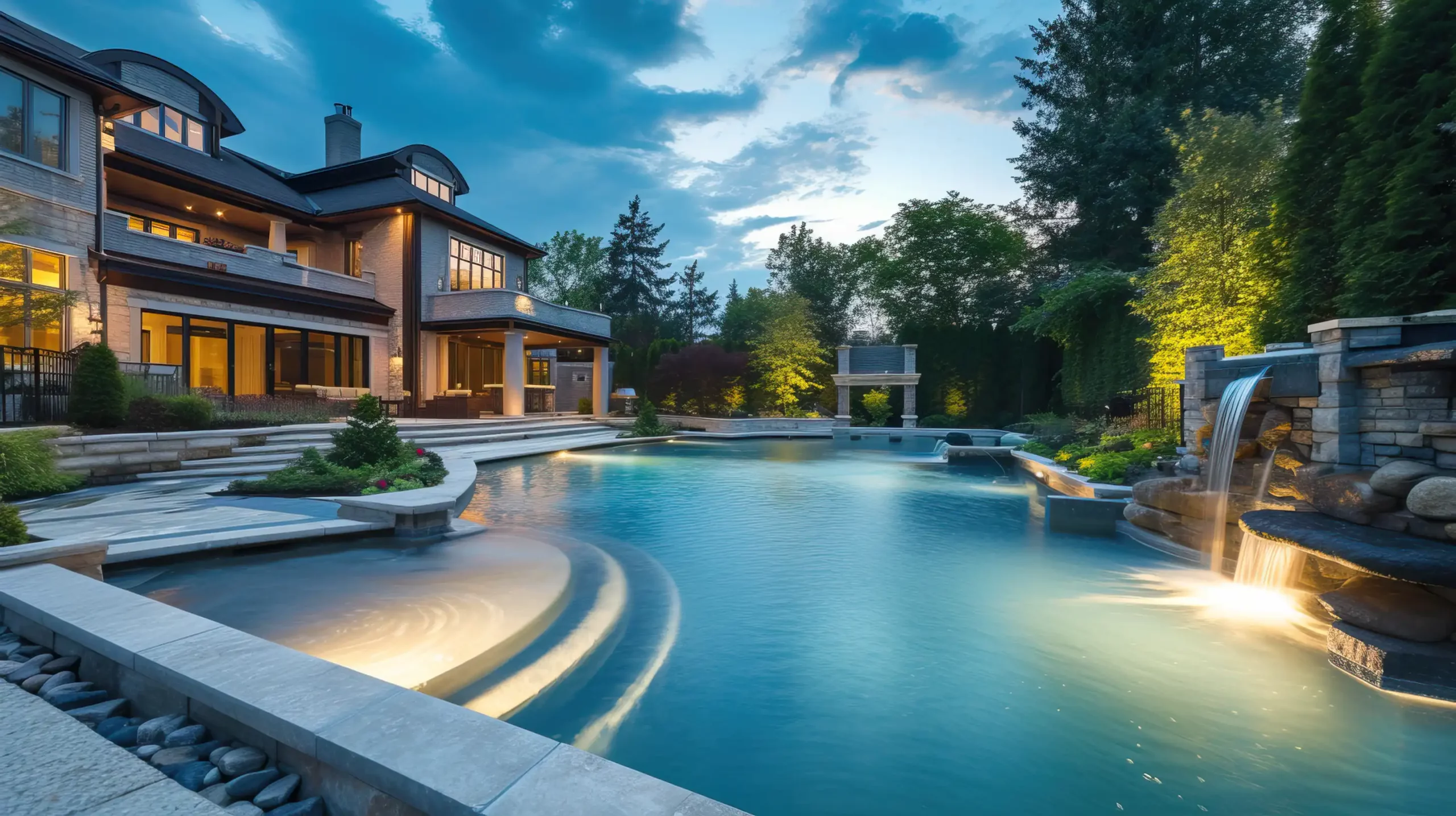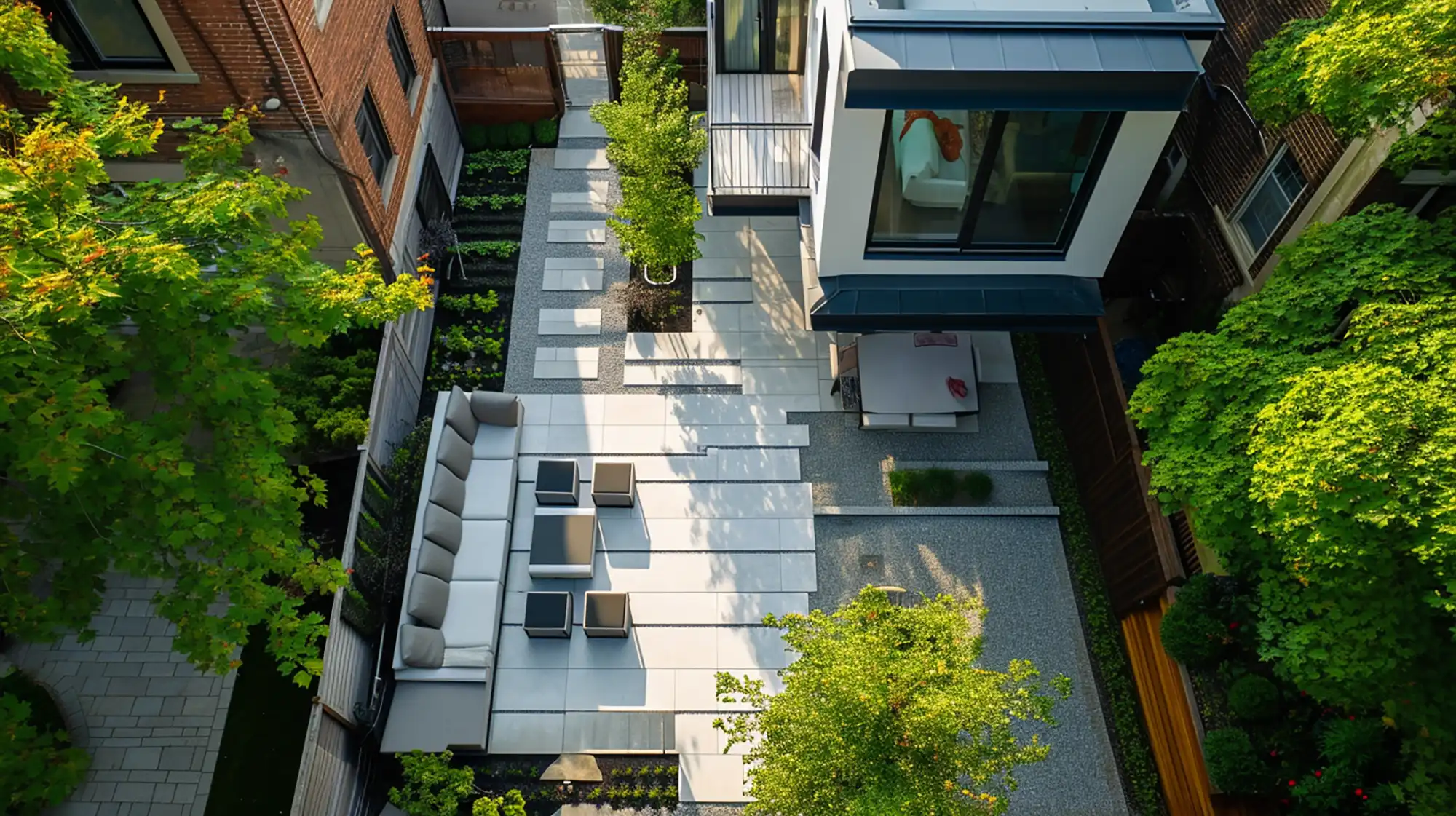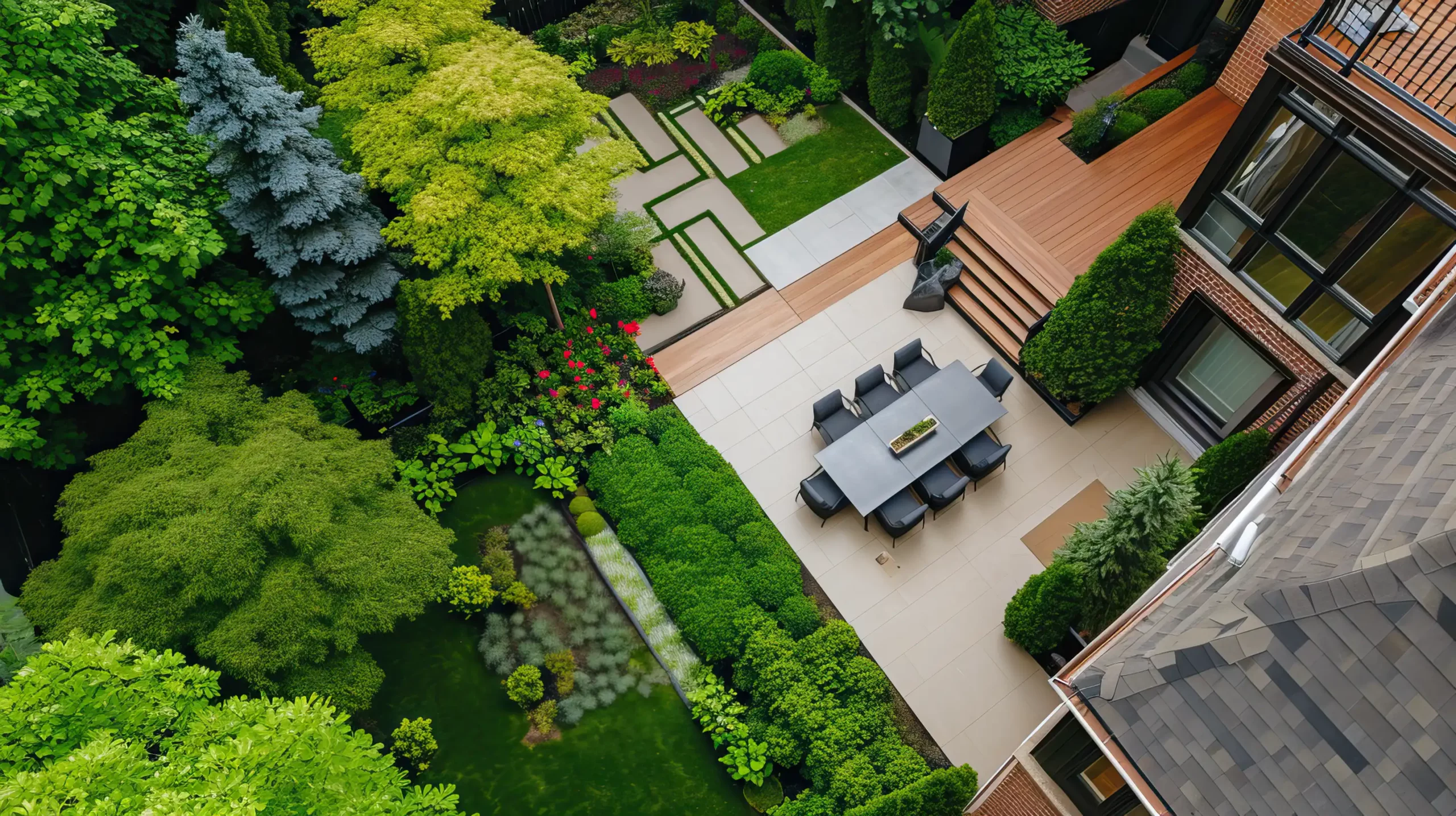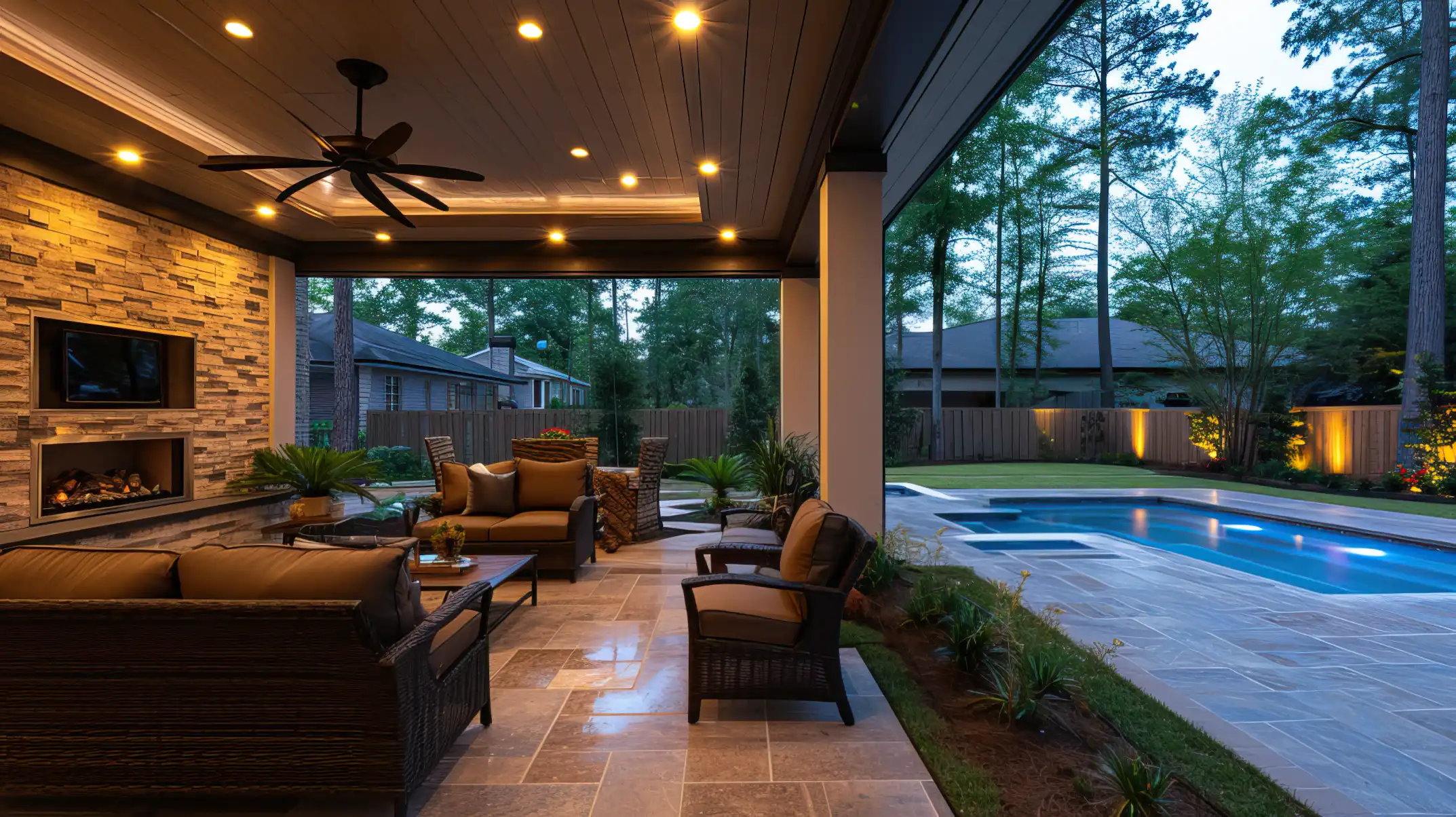Welcome to the world of artificial grass, a dynamic element that’s reshaping outdoor landscapes and lifestyles alike. With the increasing popularity of artificial turf installation, many homeowners and businesses are exploring the benefits and practicalities of this sustainable alternative to natural grass. This comprehensive guide, steeped in The Deck Store’s extensive experience in deck building and outdoor project development, will delve into the nuances of installing artificial grass. Whether you’re contemplating a DIY project or a professional setup, this article is your go-to resource for understanding everything from costs to installation techniques.
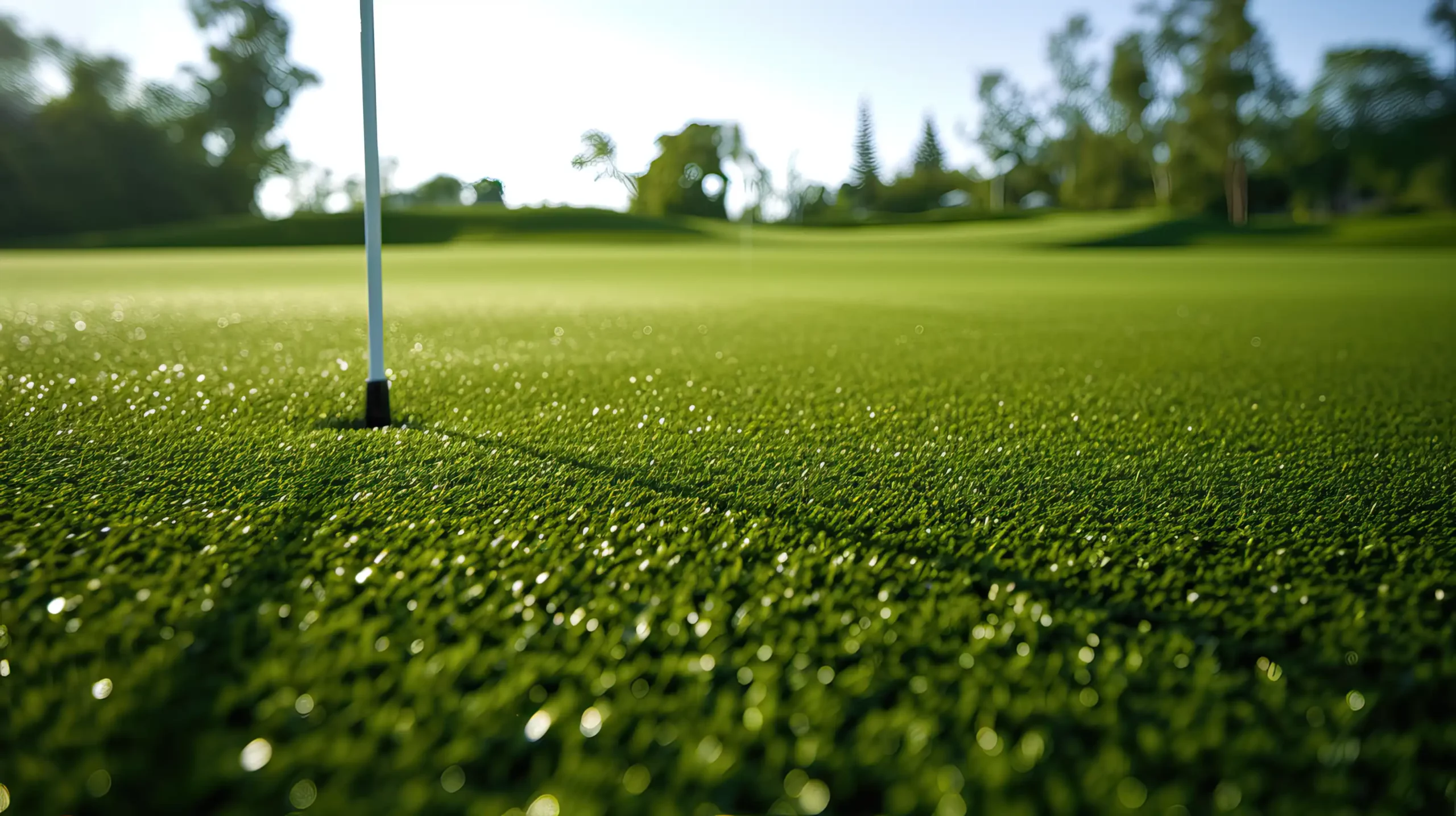
Selection of the Different Yarn Types Used in Artificial Grass
When it comes to synthetic grass, the type of yarn used is crucial for determining its appearance, feel, and durability. There are primarily three types of yarn commonly used in the manufacturing of artificial grass:
- Nylon Yarns: Strong and resilient, ideal for high-traffic areas like sports fields and playgrounds; more expensive, less soft.
- Polyethylene Yarns: Soft, natural feel, perfect for residential use in lawns; skin-friendly, with a lush green look.
- Polypropylene Yarns: Cost-effective and versatile, suitable for low-traffic, decorative landscaping.
Each thread variety improves the performance and appearance of synthetic grass, assisting in the selection of the appropriate kind for particular requirements.
Versatile Applications of Artificial Grass Across Different Settings
Synthetic grass has a diverse range of applications, each catering to different needs and preferences:
- Residential Landscaping: Ideal for lawns, gardens, and pool surrounds, offering a low-maintenance, green alternative to real grass.
- Commercial Spaces: Used in office buildings, retail spaces, and public areas for aesthetic enhancement and durability under heavy foot traffic.
- Sports Fields: Specially designed for sports like football, soccer, and golf, providing a consistent playing surface with minimal maintenance.
- Playgrounds and Schools: Safety-focused artificial grass is used in children’s play areas and schools, offering a cushioned surface to reduce injury risk.
- Pet Areas: Pet-friendly varieties are used in homes and dog parks, ensuring a durable and easy-to-clean surface for pet activities.
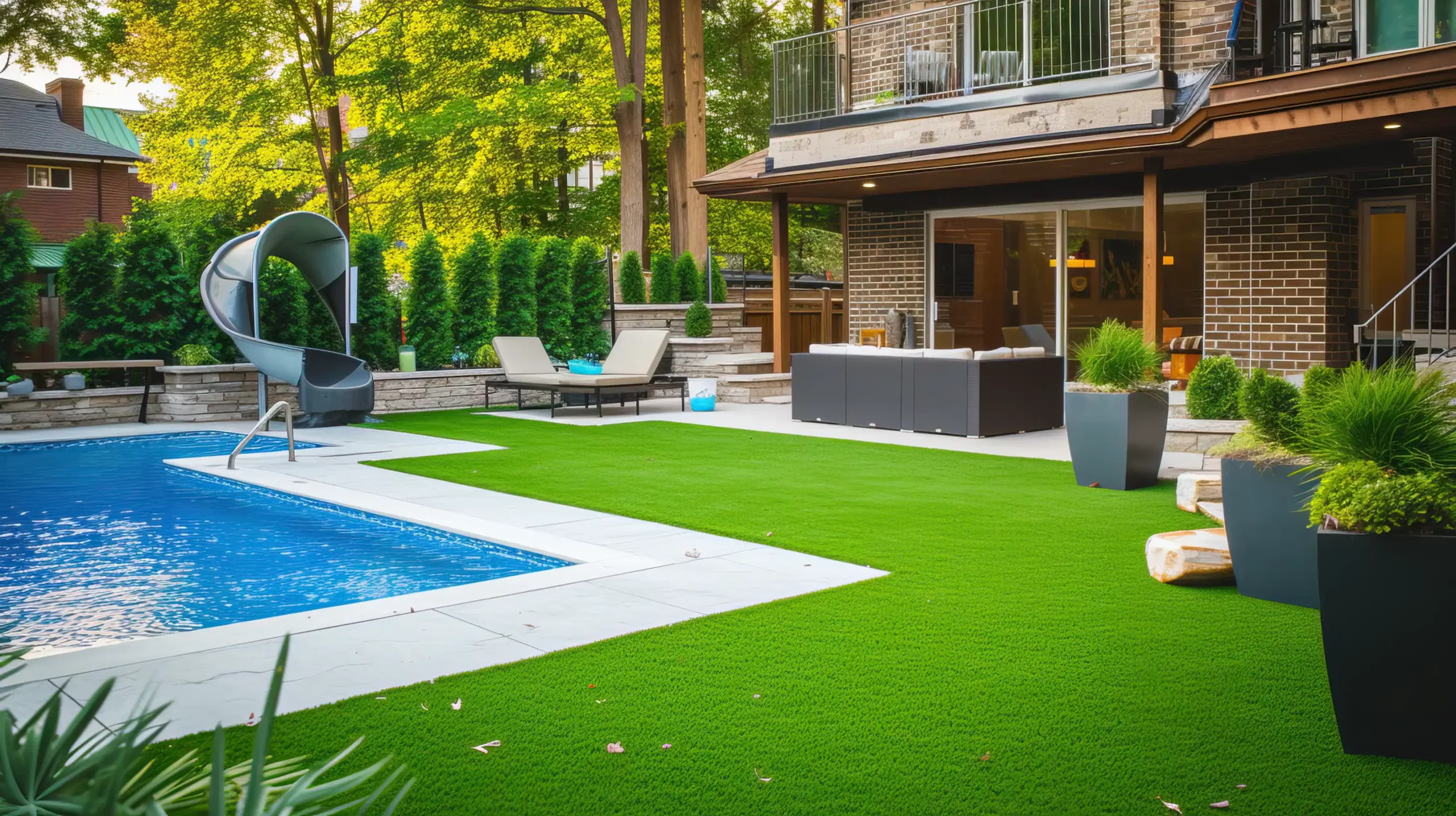

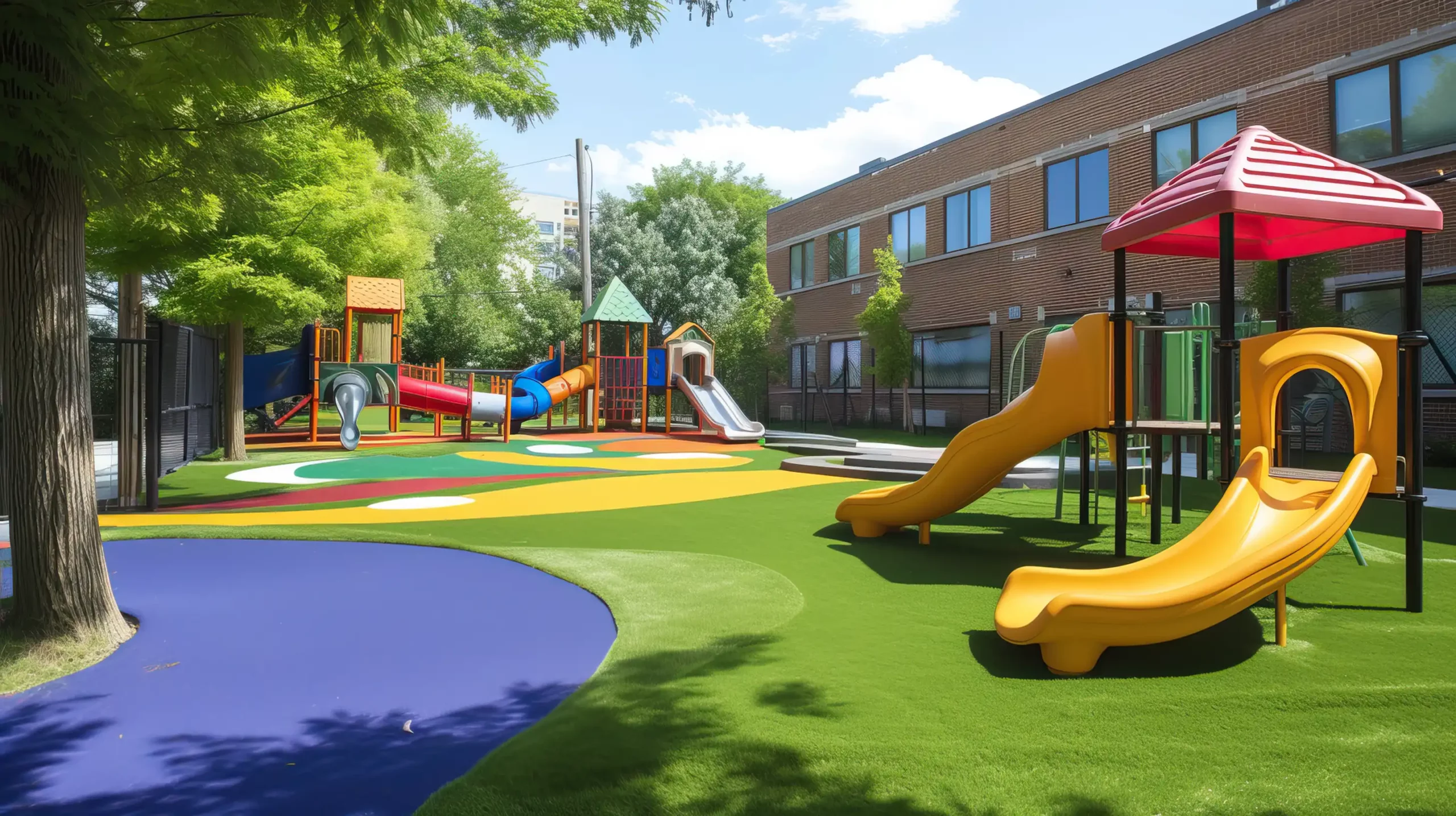
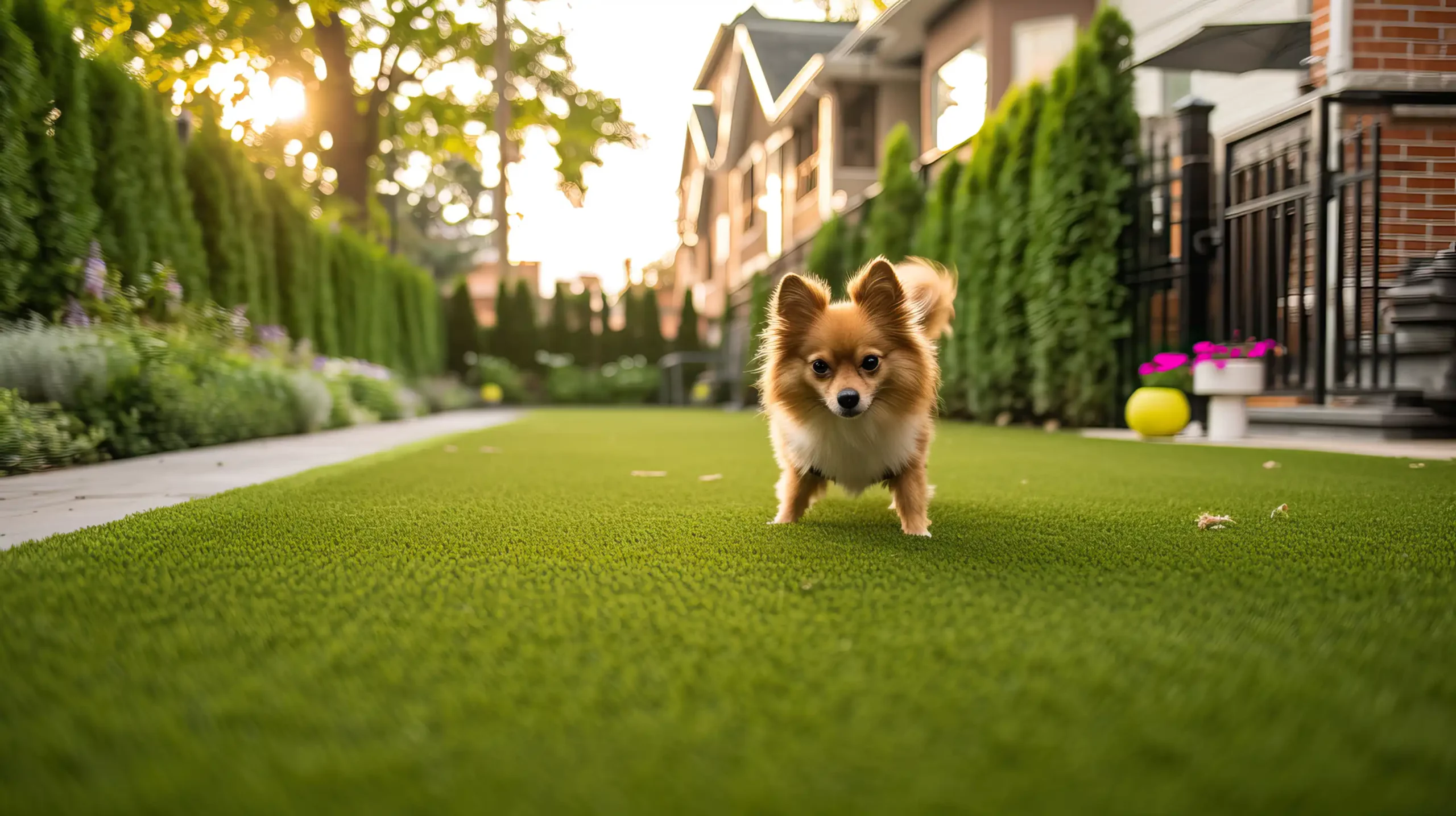
What Are the Benefits of Installing Synthetic Grass?
Low Maintenance: A Game Changer
One of the most significant advantages of artificial lawns is their low-maintenance nature. The days of mowing, watering, and fertilizing are long gone once you switch to synthetic turf. This aspect aligns perfectly with The Deck Store’s philosophy of creating hassle-free, enjoyable outdoor spaces. With fake grass, you gain more leisure time to enjoy your outdoor area without the regular upkeep associated with traditional lawns.
Eco-Friendly and Cost-Effective
Artificial grass lawns are not only easy on the eyes but also on the environment. It requires no watering, thus conserving precious water resources. Moreover, it eliminates the need for chemical fertilizers and pesticides, making it a safer option for both pets and children. From a financial standpoint, the initial outlay for this alternative turf may be more substantial compared to natural lawns, but it proves to be cost-effective over time. Reduced water bills and the absence of lawn care expenses make imitation grass a financially savvy choice.
Aesthetic Appeal Throughout the Year
Regardless of the season, artificial turf maintains its lush, vibrant appearance. This year-round beauty is a key factor in its growing popularity, especially in regions with extreme weather conditions. The Deck Store, with its rich experience in enhancing outdoor aesthetics, recognizes the value of a consistently attractive landscape, and faux turf delivers just that.
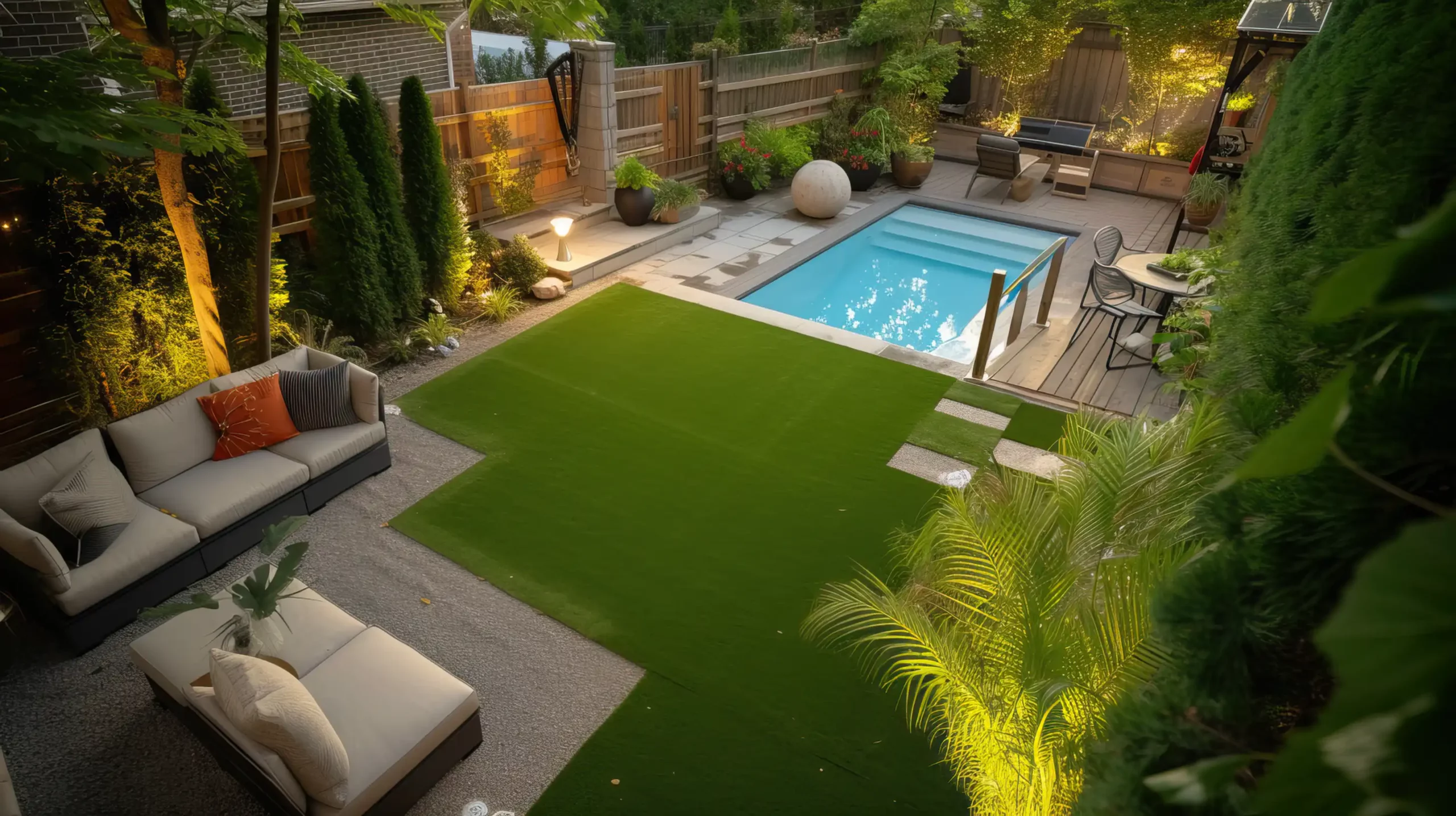
Artificial Grass Installation Steps
For those considering a setup of synthetic turf, understanding the process is key. Here’s a detailed guide to help you through each stage:
| Section | Details |
|---|---|
| Preparing the Ground |
|
| Laying the Turf |
|
| Finishing Touches |
|
Note: It’s important to remember that the choice of materials and methods can vary depending on specific requirements and local conditions. Consulting with a professional or referring to specific product guidelines is always recommended for optimal results.
Layering and Infill: The Foundations of Artificial Grass
Installing artificial grass involves a detailed process to ensure its stability, water removal, aesthetic appeal, and longevity. This process is built on careful layering and the use of specific materials.
Base Layering
- Sub-Base Layer: The initial layer consists of crushed stone or gravel. This foundational layer is crucial for ensuring proper drainage and establishing a stable base for the man-made turf.
- Leveling Layer: Over the sub-base, a layer of sharp sand is added. This layer serves to level out the surface, creating an even base for the turf.
- Weed Barrier (Optional): In some installations, a weed barrier is placed between the sand layer and the artificial turf. This helps in preventing weed growth through the turf.
Artificial Grass and Infill
- Laying the Turf: The man-made turf is then laid over these layers. This top layer is what mimics the look and feel of genuine turf, providing the aesthetic appeal.
- Infill Application: Once the turf is in place, infill is applied over it. This infill, distributed evenly across the turf surface, is then brushed or raked into the fibers of it.
- Role of Infill: Artificial grass infill, which can vary from crumb rubber to sand or organic options, settles at the base of the grass blades. It’s essential for keeping the blades upright, adding cushioning, and aiding in water removal. Moreover, it plays a significant role in enhancing the turf’s overall appearance and feel while also helping to reduce the surface temperature.
In summary, the process of installing faux grass is a layered approach, starting from the base preparation to the final application of infill. Each step and material choice is pivotal in ensuring the artificial turf not only looks and feels like genuine turf but also lasts longer and remains functional across different weather conditions.
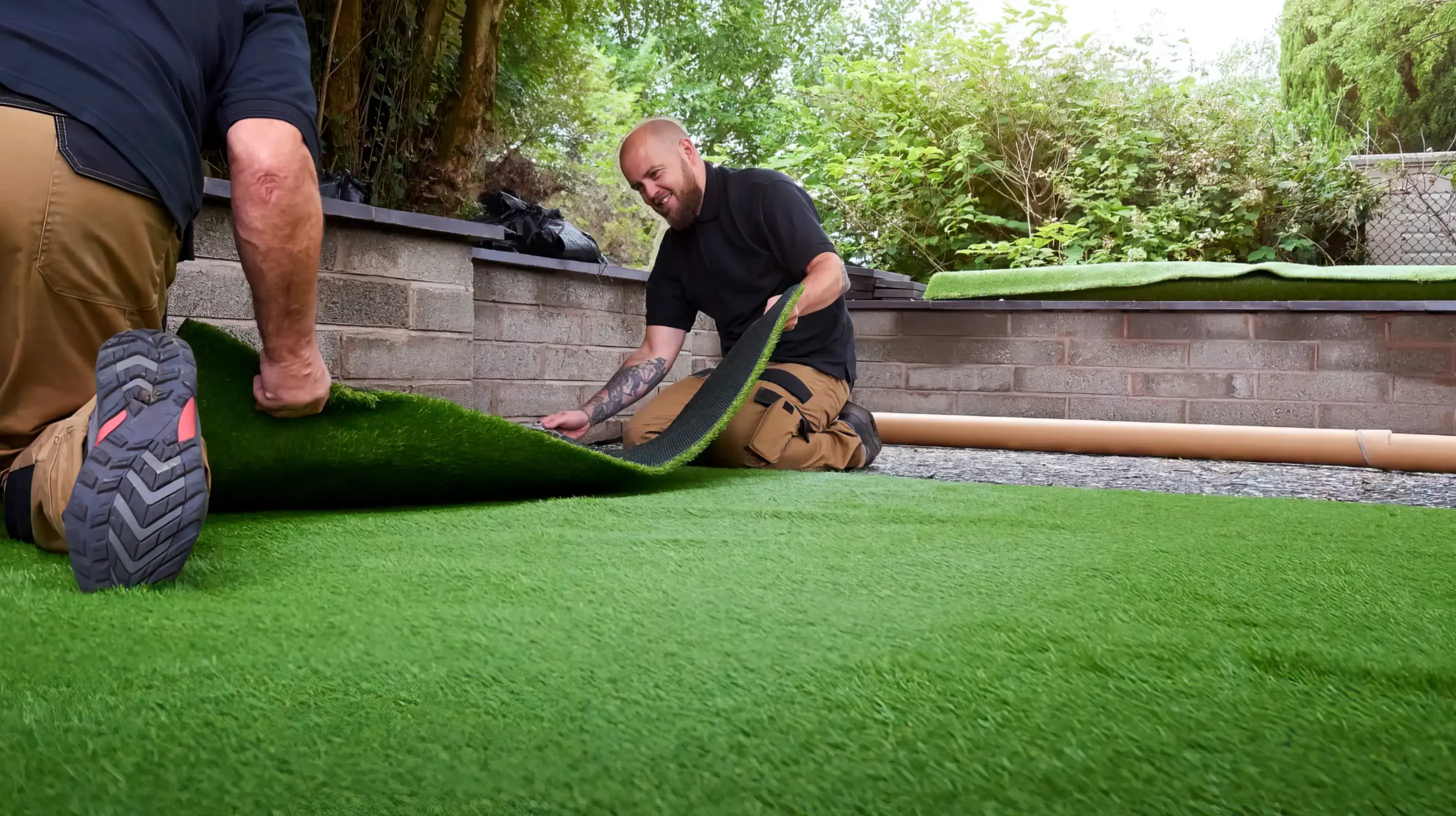
Professional vs. DIY Installation: Which is Better?
DIY Installation: Pros and Cons
Undertaking a DIY setup of artificial grass can be a rewarding project. It allows for customization and can be more cost-effective. However, it requires a significant amount of time, effort, and a certain level of skill to achieve a professional-looking result.
Professional Installation: The Expert Touch
Opting for expert setup comes with several benefits. Professionals have the expertise to handle complex landscapes and can ensure a high-quality finish. They also typically provide warranties on their work. While more expensive, a professional setup guarantees a longer-lasting and more aesthetically pleasing result.
The Deck Store’s Perspective
At The Deck Store, our extensive experience in deck building and landscaping projects has shown us that expert installation often yields the best and most sustainable results. Our team of experts ensures that every aspect of the assembly is handled with precision and care, providing peace of mind and long-term satisfaction for our clients. Understanding the Cost of Artificial Grass Installation and Materials When considering the setting up of faux grass, it’s crucial to understand the various cost factors involved. These costs can be broken down into materials, labor, and additional considerations, all of which vary depending on several key aspects.
The total cost per square foot for man-made grass typically encompasses the price of artificial turf itself, necessary preparation materials (like base materials and weed barriers), and the labor cost for installation. Material costs alone generally range from $4.50 to $7.00 per square foot, averaging around $6.00, while professional setup and labor can range from $4.00 to $13.00 per square foot. This leads to a total average cost of approximately $13.00 per square foot.
Quality and Types of Turf
High-quality turf, especially those with features such as UV protection and enhanced durability, can increase the cost. Different types of artificial grass, designed for specific purposes like mimicking certain grass types or being suitable for high-traffic areas, also come with varying price tags. For instance, polypropylene man-made grass, which is ideal for low-foot-traffic areas, can cost between $1 and $6.75 per square foot.
Cost Variations and Complexities
The complexity of the assembly plays a significant role in the overall cost. Factors like the shape of the area, ground preparation needs, and property type influence the final price. Complex shapes or specific landscaping challenges can further escalate costs. For a comprehensive project like a 1,000-square-foot area, the overall cost may range from $8,000 to $18,000, including materials, labor, and additional fees. Factors Affecting Installation Cost
Several factors can influence the total cost of your artificial grass installation. These include:
- Size of the area: Larger areas will require more turf and, consequently, a higher investment.
- Types of artificial grass: Numerous categories of man-made turf exist, each with its own price point.
- Complexity of the installation: The presence of slopes, irregular shapes, and other landscape features can add to the complexity and cost of the installation.
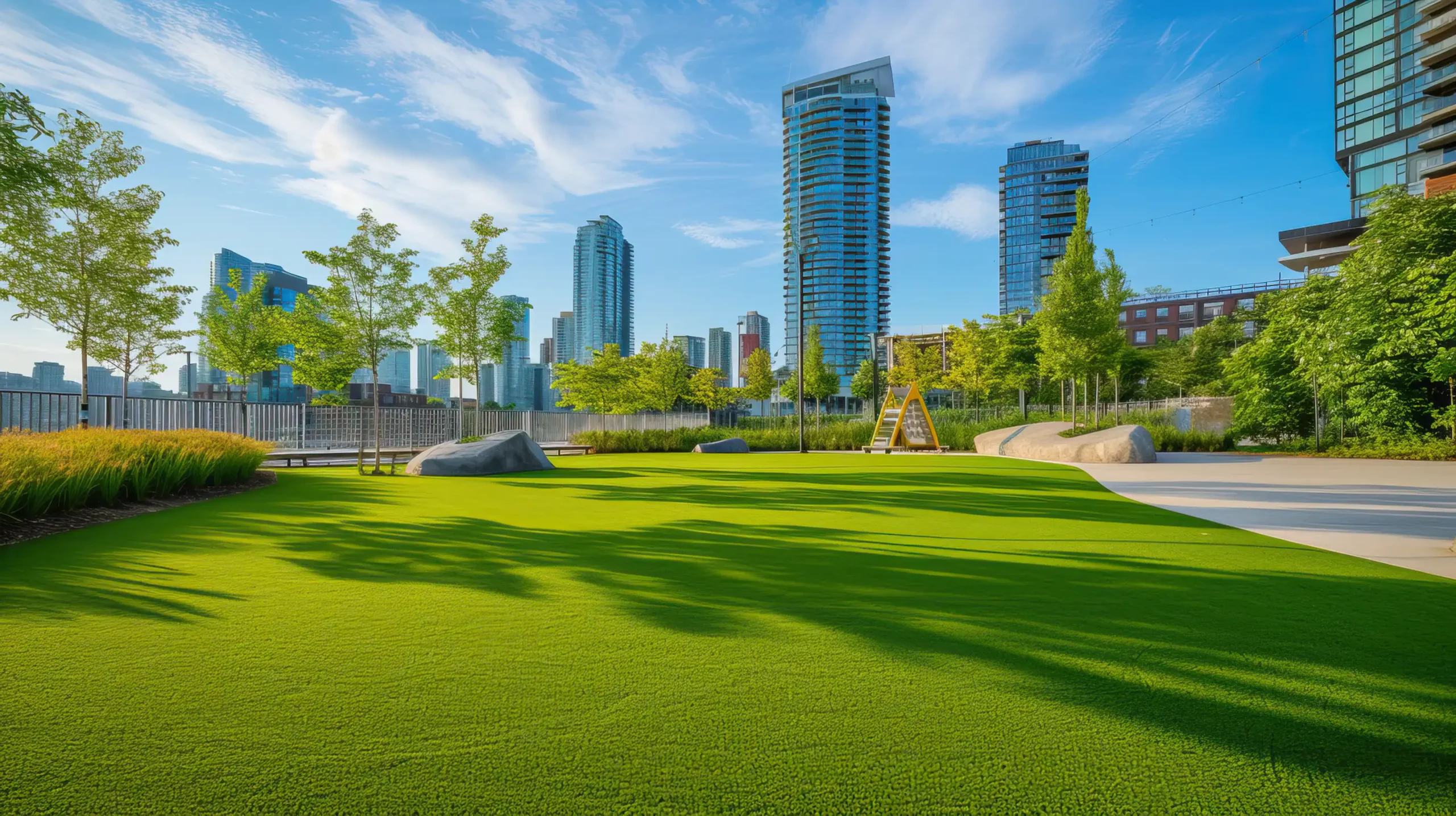
Breakdown of Costs
To budget effectively for your artificial turf installation, accurate measurements of your space are essential, along with a thorough consideration of all potential costs. Consulting with professionals, such as the team at The Deck Store, is recommended for insights into cost-effective options and high-quality turf choices.
Key Tools and Materials for Installing Artificial Grass
For a successful project, having the right tools and materials is essential. Here’s a rundown of what you’ll need:
Essential Tools
- Utility Knife: For cutting the turf to fit your space accurately.
- Rake and Broom: For spreading base material and brushing the turf fibers.
- Tape Measure and Marker: To measure and mark the turf for cutting.
Materials Required
- Artificial Turf: The star of the show, available in various types and qualities.
- Weed Barrier: To prevent weed growth under your turf.
- Base Material: Such as crushed stone or sand, for ground leveling and drainage.
Hardware and Accessories
The process of laying faux grass often requires various hardware, such as nails, screws, and staples. Hardware treated for corrosion resistance is ideal because it ensures a more enduring and robust assembly. Additionally, using galvanized hardware minimizes the need for frequent replacements or repairs, contributing to a more sustainable and cost-effective landscaping solution. Furthermore, the aesthetic appeal of galvanized materials complements the natural look of man-made grass, maintaining a cohesive and visually pleasing outdoor space. Sourcing Your Materials
Quality is key when selecting your materials. Reputable suppliers, like those The Deck Store partners with, offer high-grade options that ensure durability and aesthetic appeal. Home improvement stores can also be a resource for tools and materials.
Common Challenges in Artificial Grass Installation
Despite the straightforward process, certain challenges can arise during installation. Being prepared for these can help ensure a smoother project.
- Uneven Ground Preparation: Leveling and compacting uneven surfaces is a crucial step. It may necessitate extra landscaping to establish a stable foundation for the turf.
- Weather-Related Challenges: Laying artificial grass in extreme weather can be problematic. High temperatures, for instance, cause turf expansion, demanding meticulous assembly to prevent wrinkling.
- Precision in Seams and Edges: Achieving invisible seams and properly securing edges are essential for a professional appearance. This task requires careful attention to detail, particularly in areas with complex shapes.
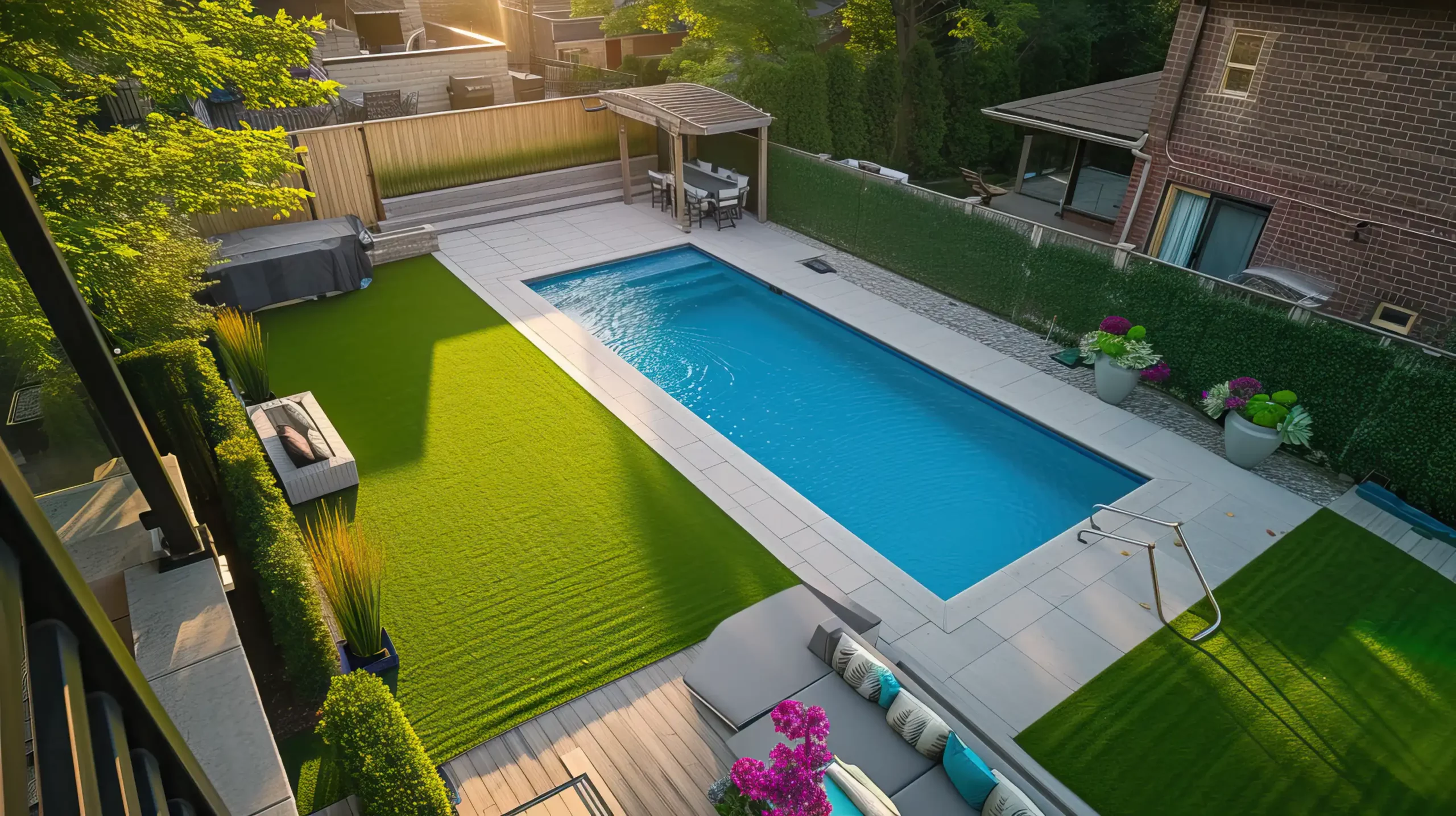
Maintaining Your Artificial Grass: Tips and Tricks
Once installed, maintaining your artificial grass is straightforward, ensuring it stays fresh and inviting for years.
- Routine Cleaning: Regularly removing debris and rinsing with a garden hose helps maintain turf quality. Using a stiff brush assists in keeping the fibers upright.
- Wear and Tear Management: In high-traffic areas, signs of wear may appear. Rotating furniture and brushing the turf can distribute wear more evenly.
- Seasonal Maintenance: Gently remove snow in cold climates. In hot summers, occasional rinsing of the turf can aid in cooling it down.
Comparing Artificial Grass with Natural Grass: Pros and Cons
The decision between synthetic and organic lawns depends on various factors, including environmental considerations, maintenance preferences, and long-term value.
- Environmental Considerations: Artificial grass conserves water, requires no chemicals, and is synthetic. Real grass provides ecosystem benefits but needs more resources for maintenance.
- Aesthetic and Practical Aspects: Synthetic turf maintains a consistently manicured appearance and is less weather-dependent, making it ideal for defining outdoor spaces. Natural turf offers a unique feel and look but demands frequent maintenance, particularly along the edges.
Long-term Value
Considering the average cost, artificial grass can be a cost-effective solution in the long run, despite the higher initial cost. Traditional lawns, although less expensive to establish, accumulate continual upkeep expenses, impacting your finances as time progresses.
Hiring a Professional Artificial Grass Installer: What to Expect
Opting for a professional installer can ensure a high-quality, long-lasting artificial grass installation. Here’s what you should know when hiring a professional: Professional assembly can vary in duration depending on the project size and complexity. Typically, a small to medium-sized lawn can be completed in a couple of days. A reputable installer will offer a warranty on their work and provide guidance on maintaining your new artificial grass, including tips for the perimeter areas. They should also be available for any follow-up queries or concerns.
A good installer will guarantee their work and give you tips on how to take care of your new artificial grass, including advice for the edges. They should also be available to answer any questions or address any concerns you have. The Deck Store has lots of experience with outdoor projects and building decks, so we know how to seamlessly incorporate artificial grass into your overall landscaping plans. We understand how important it is to create outdoor spaces that are functional, look good, and are eco-friendly.
The Deck Store’s rich experience in outdoor projects and deck building gives us unique insights into the integration of artificial grass into broader landscaping designs. We understand the importance of creating cohesive outdoor spaces that blend functionality, aesthetic appeal, and sustainability. If you hire a professional to install your artificial grass, you can be sure it will be top-quality and last a long time.
Key Takeaways
- Artificial Grass Benefits: Offers low maintenance, eco-friendliness, and aesthetic appeal throughout the year.
- Cost Factors: Initial investment vs. long-term savings, with costs influenced by area size, turf type, and assembly complexity.
- DIY vs. Professional Installation: Engaging in DIY projects can be rewarding but challenging, while those made by professionals ensure quality and durability.
- Maintenance Tips: Regular cleaning, managing wear and tear, and seasonal care are essential for longevity.
- Choosing Between Artificial and Natural Grass: Consider environmental impact, practicality, and long-term value.
Artificial grass is a versatile, practical solution for transforming outdoor spaces. Whether you choose a DIY approach or a professional setup, understanding the process, costs, and maintenance, including the specifics of artificial turf cost, can ensure a successful project. With The Deck Store’s expertise in outdoor living spaces, you can confidently embark on your artificial grass journey, creating a beautiful, sustainable, and enjoyable outdoor area.
When it comes to outdoor makeovers, The Deck Store stands out with its expertise in hardscape landscaping. We specialize in crafting spaces where each deck, patio, and walkway isn’t just built but artfully integrated into your landscape.
